Drone Regulations in Iran: What Tourists Should Know
Thanks to drones, capturing breathtaking aerial views has become more accessible than ever. These versatile gadgets offer a new perspective on photography, allowing travelers to document stunning landscapes, vibrant cityscapes, and unique cultural events from above.
In a country like Iran, with its stunning vistas and rich historical sites, the allure of using a drone to photograph or film your travels is irresistible. However, before packing your drone for your Iranian adventure, it's essential to understand the local regulations to ensure a smooth and hassle-free experience.
As of 2024, drone use in Iran is regulated by the Civil Aviation Organization of Iran (CAOI). Tourists looking to fly their drones must be aware that, while drones are permitted, there are strict guidelines and restrictions.
It is crucial to obtain the necessary permits before flying, particularly in sensitive areas or near government buildings. Additionally, flying drones without authorization could lead to significant fines or legal issues.
To make the most of your drone experience in Iran, familiarize yourself with the country's regulations, secure the appropriate permissions, and respect local rules to ensure that your aerial photography and videography remain both enjoyable and compliant with Iranian laws.
Read on to learn everything you need to know about drone regulations in Iran and discover the best drone photography destinations in Iran.
Are Drones Permitted in Iran for Tourists?

Yes, drones are permitted in Iran, but their use is subject to strict regulations. Iran's approach to drone operations reflects a balance between encouraging tourism and maintaining national security.
As a tourist, you can indeed use your drone to capture the country’s picturesque landscapes, but there are significant restrictions and procedures you need to follow. here’s what you need to know:
- Permission: To fly your drone legally, you must obtain permission from the Ministry of Culture and The Ministry of Defence and Armed Forces. Specify the times and locations you intend to use your drone.
- Authorization Details: Provide information about your drone, including weight, maximum altitude, flight radius, and flight duration. Seek safety instructions from the foreign office or your travel agency.
- Stay Informed: Visit the official website that explains all the rules for bringing your drone to Iran.
Where Can I Use My Drone?

Iran’s varied landscapes—from the vast deserts and towering mountains to lush valleys and ancient ruins—offer incredible opportunities for aerial photography. However, the use of drones is subject to certain restrictions depending on the location.
Iran's natural beauty, including the deserts like Dasht-e Kavir and Dasht-e Lut, the Alborz and Zagros mountain ranges, and the lush Caspian Sea region, provides breathtaking backdrops for drone photography. These areas are generally open for drone use, provided you adhere to the country’s general regulations. Flying your drone over these open landscapes can yield some of the most spectacular shots of your travels.
Restricted Areas: Where Not to Fly Your Drone
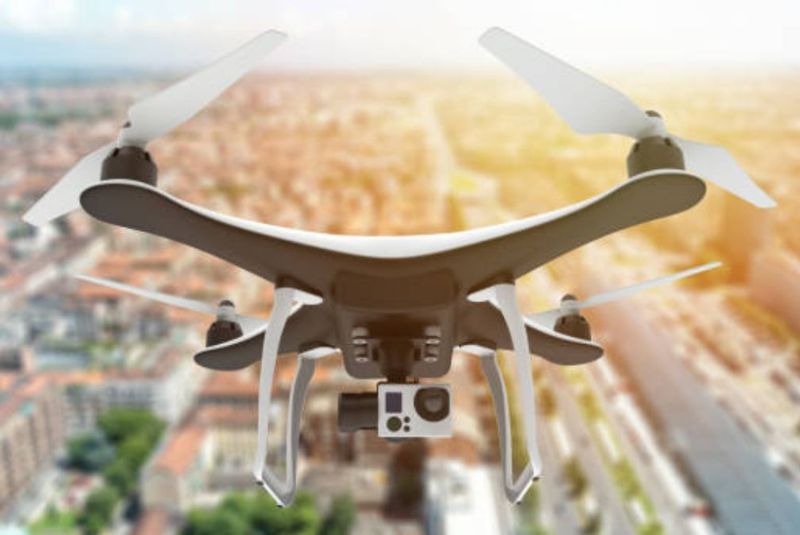
Certain places are off-limits for drone flights:
- Urban Areas: Using drones in Iranian cities, including Tehran, Shiraz, and Isfahan, is heavily restricted. The capital, Tehran, is a no-fly zone for drones. This prohibition extends to the city’s entire metropolitan area, so it is advisable to avoid flying your drone here altogether.
For other cities, although flying a drone might be technically possible, it is recommended to seek permission to avoid any legal complications. Always be cautious of flying over densely populated areas, historical sites, and significant urban landmarks.
- Tehran: Drone operations are forbidden within the capital city, Tehran. This includes capturing aerial views of the city’s landscape or historical sites.
In addition to cities, there are several specific areas where drone use is strictly prohibited:
- Military Bases: Drone flights near military installations are forbidden due to security concerns. Always keep your drone away from these sensitive areas.
- Nuclear Facilities: Locations such as nuclear power plants and research facilities are off-limits for drone operations. This includes areas like Bushehr, Natanz, and Isfahan, where there have been past incidents related to drone use.
- Airports: Maintain a distance of at least 2 kilometers from airports and air traffic areas to avoid any interference with aircraft operations.
- Government Buildings: Avoid flying over police stations, government buildings, and other official sites to respect local regulations and avoid potential legal issues.
Do I Need Permission to Fly a Drone in Iran?
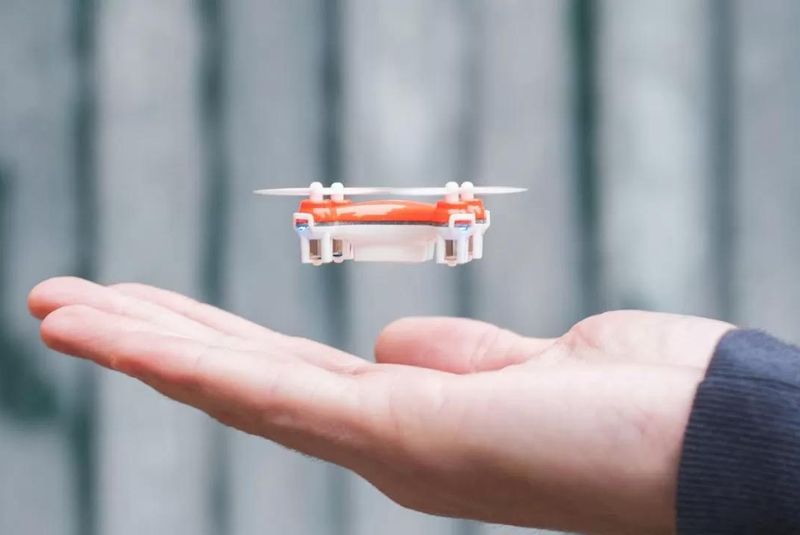
Yes, you may need permission depending on where and how you intend to use your drone. Here's how to navigate the permission process:
Recreational Drone Use
If your drone weighs less than 300 grams, you generally do not need a special permit for recreational use. However, this does not exempt you from following general regulations, such as avoiding restricted areas and adhering to altitude limits. Always verify local regulations as they can change, and some areas might still require you to inform local authorities of your drone activities.
Commercial Use
For commercial drone operations, obtaining a permit is mandatory. This applies to any drone activities conducted for business purposes, such as real estate photography, promotional videos, or other commercial projects. To secure a permit:
Permission Process:
- Authorities Involved: For permission, you will need to contact the Ministry of Culture and the Ministry of Defence and Armed Forces. Provide details about your drone, including its weight, maximum altitude, and intended flight areas.
- Application Details: The application process involves specifying your drone's specifications, flight plans, and intended times for use. This helps ensure that your drone operations do not interfere with sensitive areas or national security.
- Application Process: Submit an application to the relevant authorities, including the Ministry of Culture and the Ministry of Defence and Armed Forces.
- Authorized Operators: Foreign tourists interested in commercial drone use might need to work with local licensed operators. The process involves coordinating with these operators for the necessary approvals and ensuring compliance with local regulations.
Drone regulations in Iran

Iran's drone regulations are primarily focused on ensuring safety, security, and respect for privacy. Here's a detailed breakdown of the key regulations:
1. Altitude and Distance Restrictions:
- Altitude Limit: Drones must not exceed an altitude of 50 meters (165 feet) from the ground.
- Distance from People: Maintain a minimum distance of 250 meters from residential areas, schools, cinemas, and large crowds.
2. Prohibited Areas:
- Military Installations: Drones are strictly prohibited near military bases and facilities.
- Airports: Avoid flying within 2 kilometers of airports or any area where aircraft are operating.
- Sensitive Sites: No drone flights are allowed over nuclear power plants, police stations, or official government buildings.
3. Time and Weather Restrictions:
- Daylight Hours: Drones can only be flown during daylight hours.
- Weather Conditions: Ensure visibility is greater than 3 kilometers and avoid flying in adverse weather conditions.
4. Privacy Considerations:
- Respect the privacy of individuals and avoid capturing images or videos of people without their consent.
5. Weight and Permits:
- Under 300 Grams: Drones weighing less than 300 grams do not require a permit for recreational use.
- Over 300 Grams: Drones heavier than 300 grams require a permit. This includes providing details about the drone’s specifications such as weight, maximum altitude, flight radius, and time.
Agencies Responsible for Regulating Drones
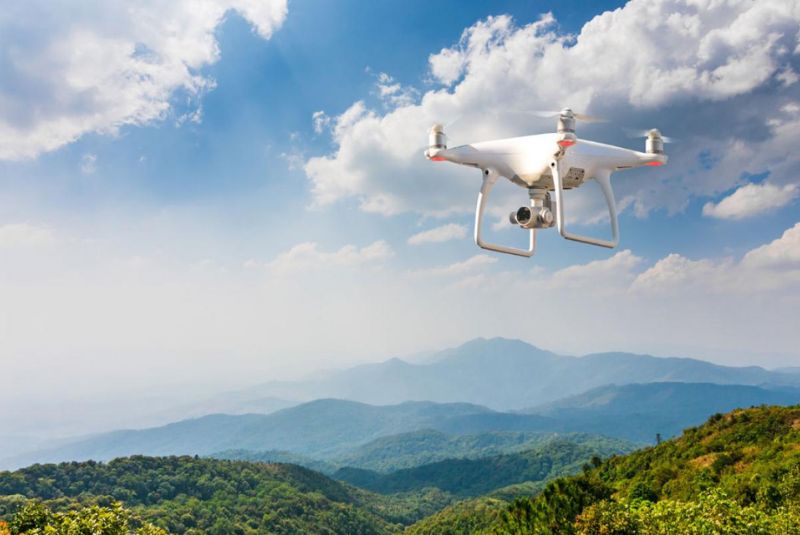
The Civil Aviation Organization of Iran (CAOI) is the primary authority overseeing drone regulations in the country. They are responsible for issuing permits, enforcing laws, and ensuring the safe operation of drones. For the most up-to-date information on drone regulations and to apply for permits, visiting the CAOI website or contacting their offices directly is advisable.
Best Places for Drone Photography in Iran
Iran’s diverse landscapes offer unparalleled opportunities for stunning drone photography. From the rugged highlands to vast deserts, here are some of the best locations to capture breathtaking aerial views in Iran.
Jahan Nama Highlands, Golestan Province
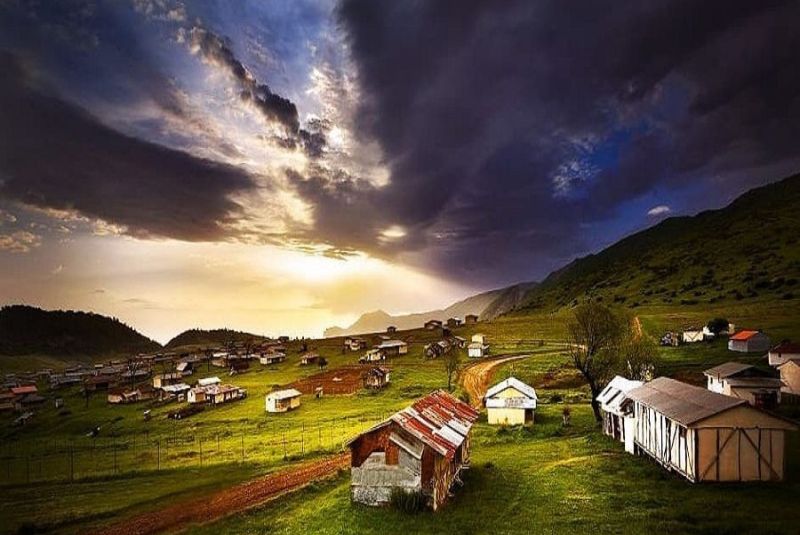
Nestled in the eastern Alborz mountain range, Jahan Nama Highlands in Golestan Province is a hidden gem for drone enthusiasts. The area is renowned for its dense forests and dramatic highland scenery, offering sweeping views of lush greenery and rugged terrain.
Valley of Stars, Qeshm
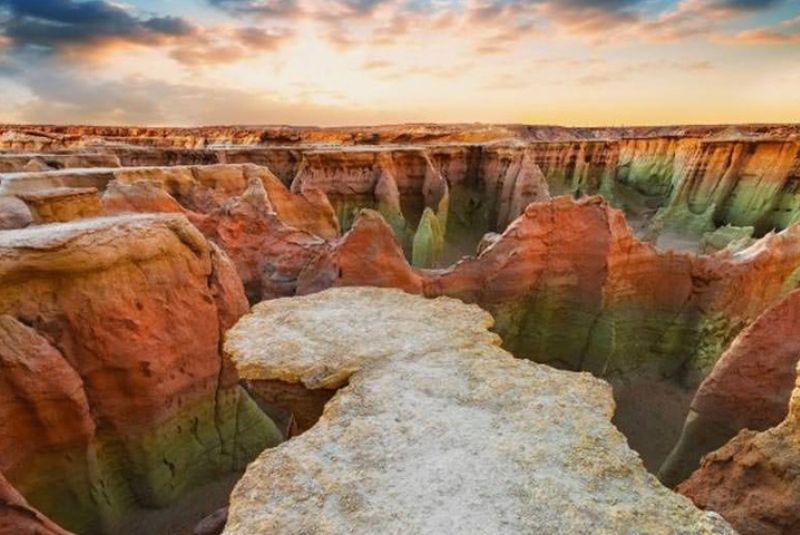
Qeshm Island's Valley of Stars is a natural marvel and a must-visit for drone photographers. This intriguing geopark features otherworldly rock formations that locals believe were created by a fallen star. The valley’s unique shapes and formations, sculpted by wind and erosion, provide a surreal landscape that is perfect for aerial shots.
The Valley of Stars is particularly striking during golden hour when the light accentuates the geological features, making it an excellent spot for capturing dramatic, celestial-themed imagery.
Maranjab Desert, Isfahan

The Maranjab Desert, located near the village of Maranjab in Isfahan province, is a dream destination for drone photography. Known for its vast sand dunes and clear skies, this desert offers endless possibilities for capturing striking images. The dramatic sunsets and expansive desert landscape provide a backdrop for stunning aerial photography.
Lut Desert
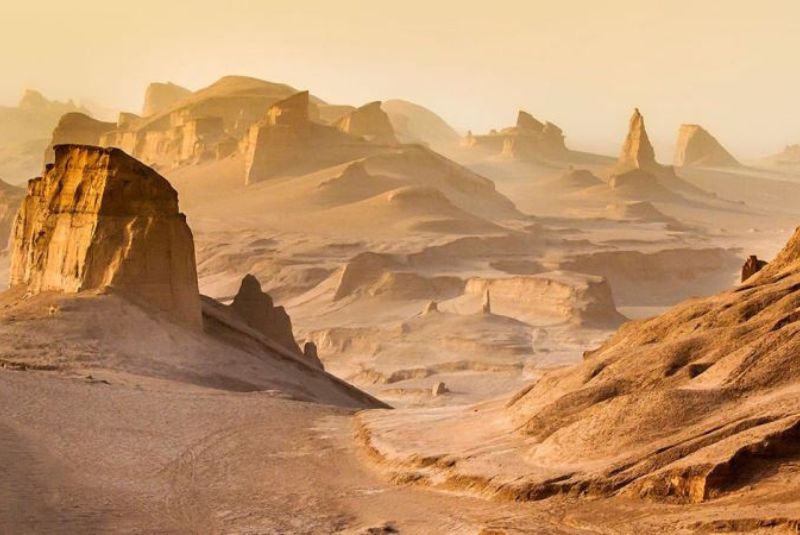
The Lut Desert, or Dasht-e Lut, is a UNESCO World Heritage site known for its immense geological significance and breathtaking landscapes. Spanning over 50,000 square kilometers, this desert features unique rock formations, sand dunes, and the famous Kaluts—giant rock formations shaped by wind erosion making it a fascinating location for drone photography.
The clear, star-filled night skies offer an additional opportunity for capturing stunning astrophotography, with minimal light pollution enhancing the visibility of celestial objects.
Mesr Desert

Located in Isfahan province, the Mesr Desert, also known as the Sand Sea Desert, is another spectacular location for drone photography. Surrounded by mountain ranges and featuring natural sand dunes, this desert offers an array of photographic opportunities. The desert’s undulating dunes and clear skies create a dramatic and picturesque setting.
Shahdad Desert
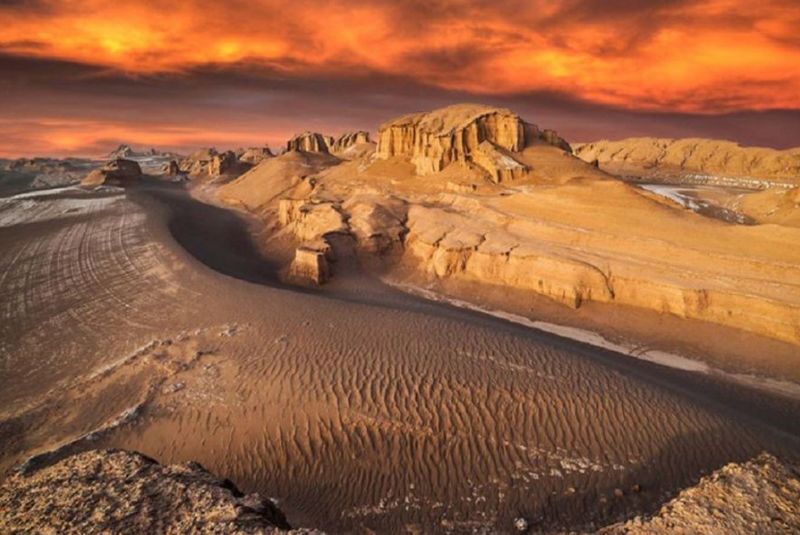
Shahdad Desert in Kerman Province is renowned for its fascinating geological formations and large scale. Known as the “Imaginary City of the Desert,” this area is characterized by unique rock formations and vast stretches of barren land. The intricate patterns created by wind erosion resemble ancient ruins and ghost towns, making it a visually captivating location.
Mount Damavand
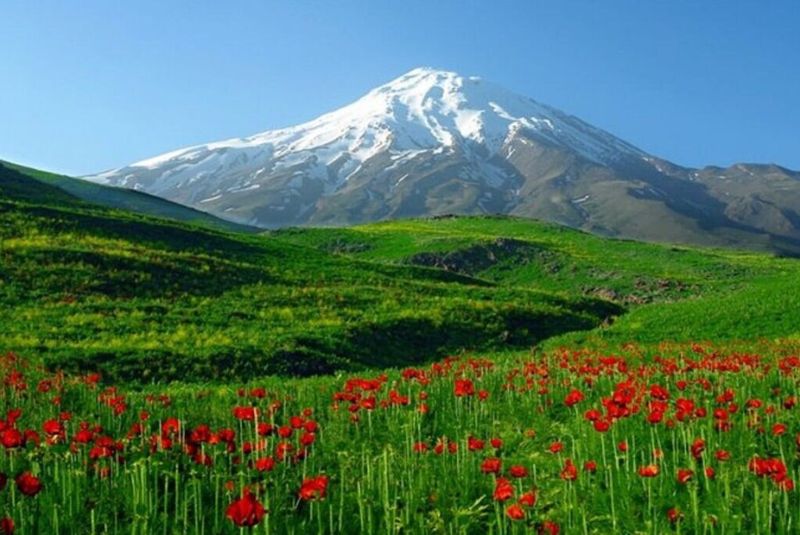
Mount Damavand, the highest peak in the Middle East, stands at 5,610 meters in the Alborz mountain range. This snow-capped giant is a prominent feature of Iran’s landscape and offers spectacular aerial views from its slopes. The grandeur of Mount Damavand, combined with its cultural significance, makes it an excellent subject for drone photography.
Maharloo Lake (Pink Lake)
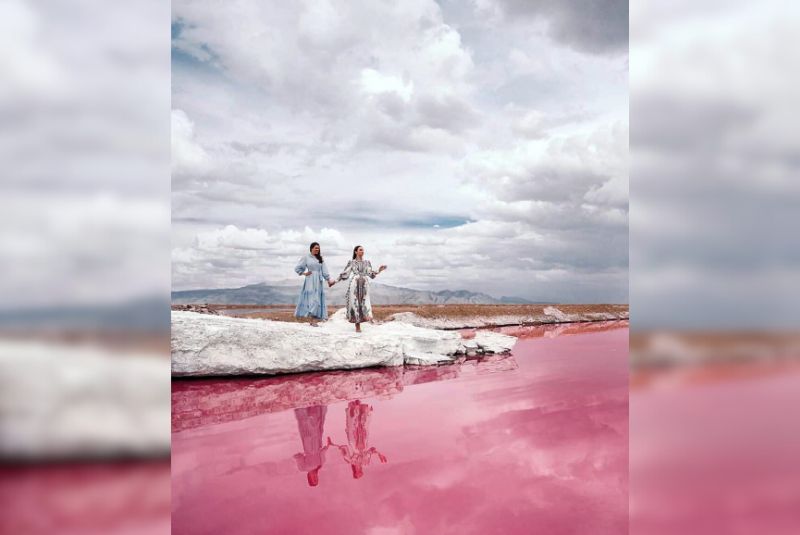
Located near Shiraz, Maharloo Lake also known as the Pink lake is famous for its striking pink hue, caused by the high concentration of algae. This seasonal lake offers a vibrant and visually arresting subject for drone photography. The contrast between the pink waters and the surrounding landscape creates a stunning visual effect.
Tips for Foreign Drone Operators
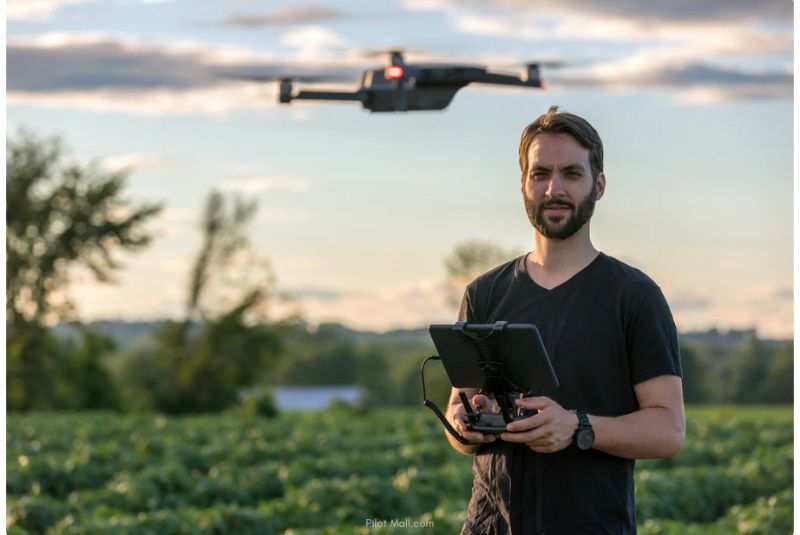
For foreign tourists planning to bring their drones to Iran, here are some additional tips to ensure a hassle-free experience:
1. Research and Preparation
- Understand Local Laws: Familiarize yourself with Iranian drone regulations before your trip. This includes understanding no-fly zones, altitude limits, and necessary permits.
- Contact Authorities: Reach out to Iranian authorities or local tour operators for the most current information and guidance.
2. Security Considerations
- Avoid Suspicion: Be aware of the sensitive nature of drone technology in Iran. Avoid any actions that might be perceived as spying or security threats.
- Carry Documentation: Keep all necessary documentation, including permits and drone specifications, readily available to present if requested by authorities.
3. Local Assistance
- Hire Local Operators: If you are unsure about the regulations or need assistance, consider hiring a local drone operator who can help you navigate the legal landscape and ensure compliance.
4. Respect Local Customs
- Be Discreet: Respect local customs and sensitivities regarding drone use. Being polite and considerate will enhance your overall experience and reduce the likelihood of misunderstandings.
Bottom Line
Traveling to Iran with a drone offers exciting opportunities to capture the country’s stunning landscapes and historical sites from unique perspectives. However, understanding and adhering to Iranian drone regulations is essential to ensure a smooth and enjoyable experience.
Whether you are capturing the expansive deserts,or majestic mountains, responsible drone use will enhance your travel experience and contribute to a memorable journey in Iran. Safe flying!
Share your story!
Comment below and let us know about your Experience.
Your story inspires others!


Comment
Leave a Comment